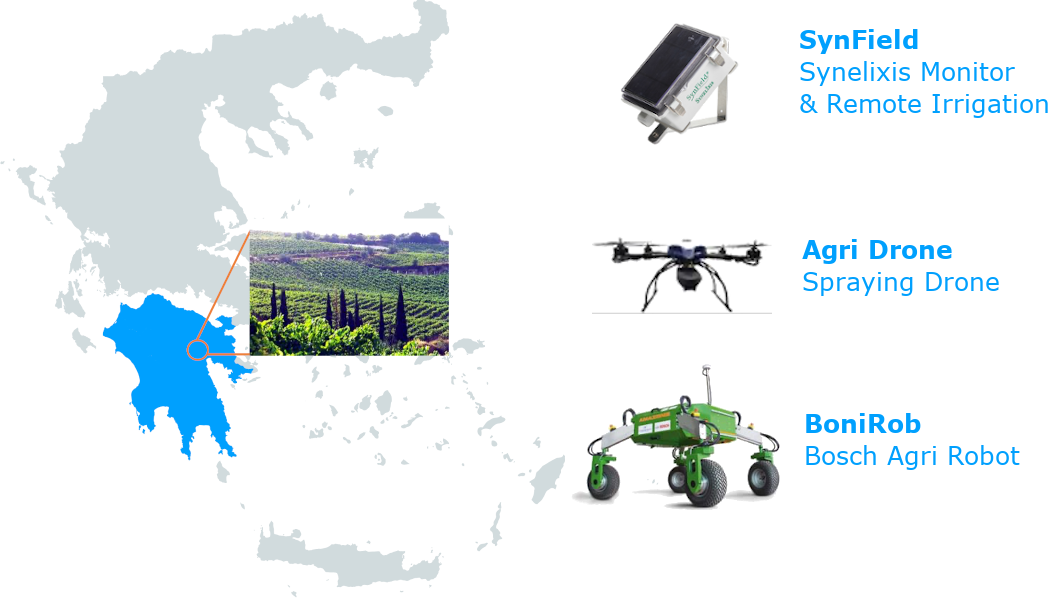This use case is expected to demonstrate significant benefits arising from IoT exploitation in optimizing various aspects of smart agriculture. The involved IoT devices include multiple types of ground micro-climate, soil and leaf information stations, drones, mobile robots, as well as wearable devices. In this use case, IoT-NGIN will be piloted against several agricultural goals:
- to enable the assertion of the evolution of the crop
- to detect diseases
- to optimize irrigation and fertilization
- to reduce spraying and support manual fruit harvesting
Moreover, data from the micro-climate may be used for other applications, e.g. identifying the driving conditions in nearby roads and highways.
Technologies already in place include an anti-frost system, a hail protection system, automated irrigation and a fertilisation system. Monitoring the status of the growing crops is a very important factor for getting decisions on irrigation, fertilization and harvesting, which in many cases, significantly influence the quality and the quantity of the crop. As such, the SynField system by Synelixis (IoT nodes and cloud platform) has already been installed in orchards.

